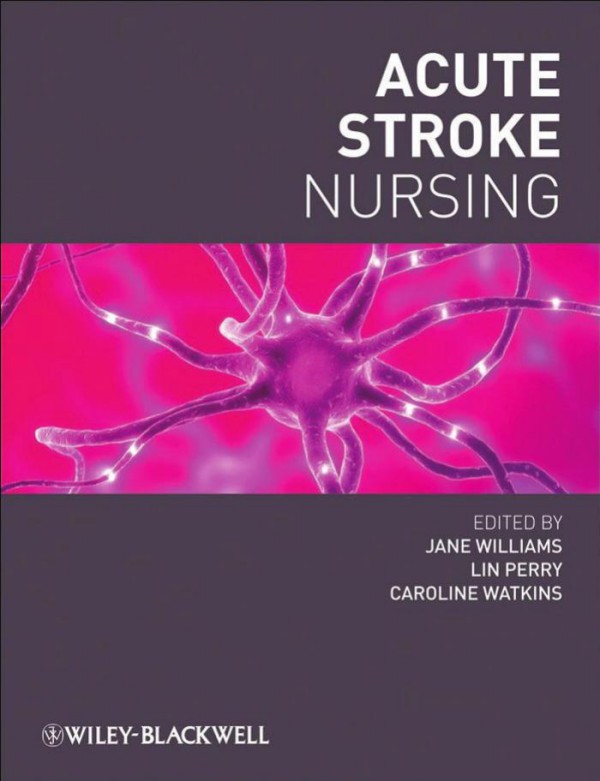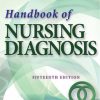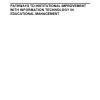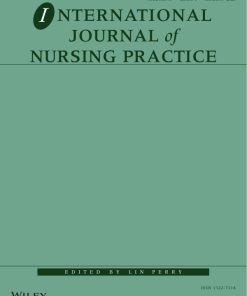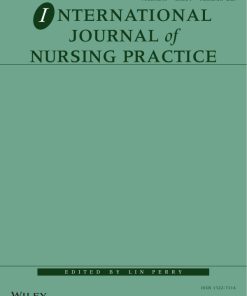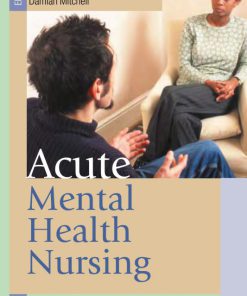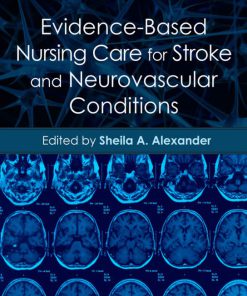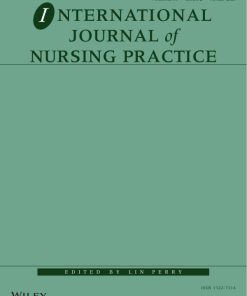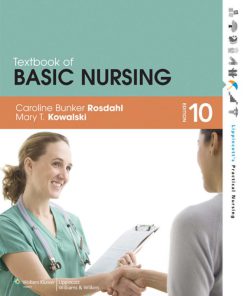Acute Stroke Nursing 1st Edition by Jane Williams, Lin Perry, Caroline Watkins 1405161043 9781405161046
$50.00 Original price was: $50.00.$25.00Current price is: $25.00.
Authors:Jane Williams, Lin Perry, Caroline Watkins , Tags:1405161043; 9781405161046; 1444318845; 978-1444318845 , Author sort:Jane Williams, Lin Perry, Caroline Watkins , Ids:1405161043 , Published:Published:Jun 2010
Acute Stroke Nursing 1st Edition by Jane Williams, Lin Perry, Caroline Watkins – Ebook PDF Instant Download/Delivery. 1405161043, 9781405161046
Full download Acute Stroke Nursing 1st Edition after payment

Product details:
ISBN 10: 1405161043
ISBN 13: 9781405161046
Author: Jane Williams, Lin Perry, Caroline Watkins
Stroke is a medical emergency that requires immediate medical attention. With active and efficient nursing management in the initial hours after stroke onset and throughout subsequent care, effective recovery and rehabilitation is increased. Acute Stroke Nursing provides an evidence-based, practical text facilitating the provision of optimal stroke care during the primary prevention, acute and continuing care phases.
This timely and comprehensive text is structured to follow the acute stroke pathway experienced by patients. It explores the causes, symptoms and effects of stroke, and provides guidance on issues such as nutrition, continence, positioning, mobility and carer support. The text also considers rehabilitation, discharge planning, palliative care and the role of the nurse within the multi-professional team. Acute Stroke Nursing is the definitive reference on acute stroke for all nurses and healthcare professionals wishing to extend their knowledge of stroke nursing.
- Evidence-based and practical in style, with case studies and practice examples throughout
- Edited and authored by recognised stroke nursing experts, clinicians and leaders in the field of nursing practice, research and education
- The first text to explore stroke management from UK and international perspectives, and with a nursing focus
Acute Stroke Nursing 1st Table of contents:
1. Setting the Scene
Introduction
Stroke Epidemiology
Stroke Policy
Stroke Management Strategies
Research and Education
Conclusion
References
2. Developing Stroke Services: A Key Role for Nursing and Nurses
Introduction
Service Development
The Nursing Contribution to Stroke Services
The Political Agenda Shaping Stroke Service Development
Conclusion
References
3. What is a Stroke?
Introduction
Stroke Development Processes
Risk Factors for Stroke
Anatomy, Physiology and Related Stroke Clinical Findings
Standardised Instruments for Acute Neurological Assessment
Conclusion
References
4. Acute Stroke Nursing Management
Introduction
Priorities in Acute Stroke Management
Hyperacute Stroke Management
Acute Stroke Management
Conclusion
References
5. Nutritional Aspects of Stroke Care
Introduction
Do Stroke Patients Experience Nutritional Problems Pre-Stroke?
How Does Stroke Affect Dietary Intake?
How Can Stroke Patients Be Helped to Maintain Adequate Dietary Intake?
Conclusion
References
6. Promoting Continence
Introduction
Bladder Problems and Urinary Incontinence
Bowel Problems and Bowel Care
Conclusion
References
7. Management of Physical Impairments Post-Stroke
Introduction
Movement
Moving and Handling People with Stroke
Therapeutic Positioning and Seating in the Acute Phase
Promoting Early Mobilisation
Falls Prevention
Restoration and Re-education of Movement
Management of the Upper Limb
Further Rehabilitation Strategies and Novel Developments
Patients’ Perspective on Mobility Rehabilitation
Conclusion
References
8. Communication
Introduction
Communication Impairments Caused by Stroke
Language Minorities
The Role of the Speech and Language Therapist in Acute Stroke Care
Psychosocial Issues and Quality of Life
Conclusion
References
9. Mood and Behavioural Changes
Introduction
Psychological Reactions to the Onset of Stroke
Conclusion
References
10. Minimally Responsive Stroke Patients
Introduction
Definitions and Identification
Minimally Responsive State
‘Locked-in’ Syndrome
Conclusion
References
11. Rehabilitation and Recovery Processes
Introduction
Initiation of Rehabilitation
Outcomes of Rehabilitation
Recovery Processes
Transfer to Rehabilitation
Rehabilitation Provision
Conclusion
References
12. Stroke and Palliative Care: A Difficult Combination?
Introduction
Palliative Care
Relevance of Palliative Care to Stroke
Organisational Challenges
Conclusion
References
13. Reducing the Risk of Stroke
Introduction
Primary Prevention
Secondary Prevention: Identifying Those at Risk of Stroke
Public Awareness and Access to Services
Secondary Prevention of Stroke in Less Common Aetiologies and Patient Groups
Conclusion
References
14. Longer-Term Support for Survivors and Supporters
Introduction
Leaving Hospital
What is Required Longer Term?
What Do Carers Want?
Conclusion
References
15. Stroke Resources for Professionals, Patients, and Carers
National Associations
Resources for Patients and Carers
Other Resources and Organisations
Specialist International Journals
Non-Specialist Journals’ Stroke Collections
Clinical Practice Guidelines
Finding Current Stroke Research
Evidence-Based Practice Resources
Chapter Links
People also search for Acute Stroke Nursing 1st:
an acute ischemic stroke is caused by
an ischemic stroke is most often the result of a(n)
an acute ischemic stroke (ais)
quizlet stroke nclex questions

